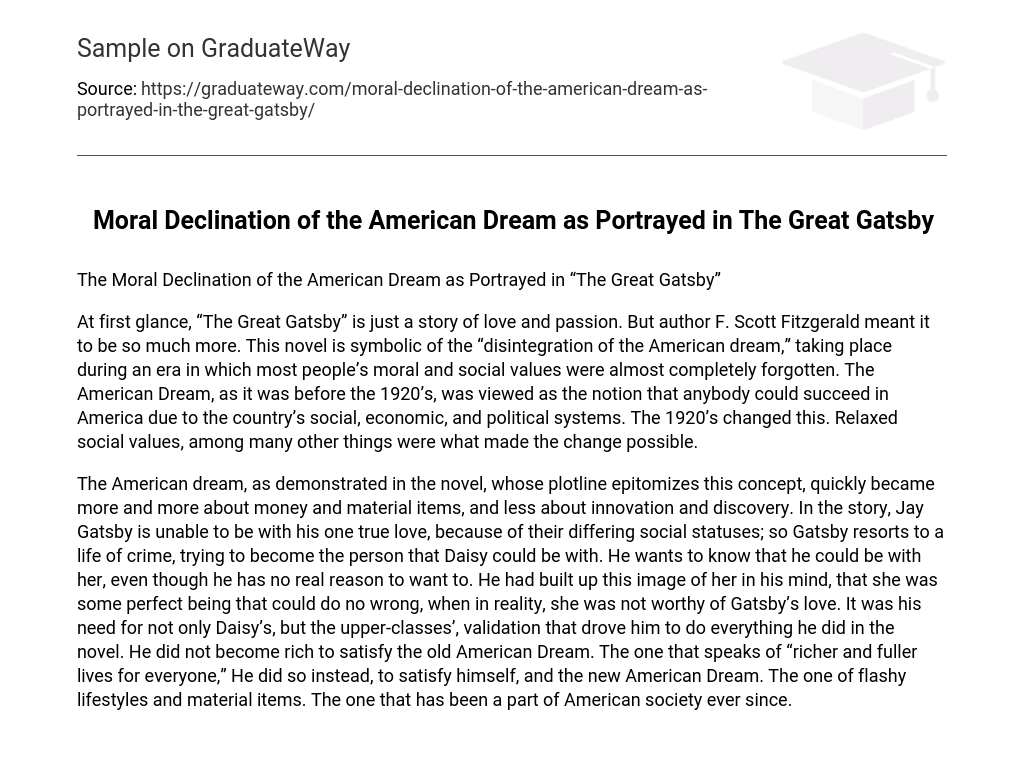The Moral Declination of the American Dream as Portrayed in “The Great Gatsby”
At first glance, “The Great Gatsby” is just a story of love and passion. But author F. Scott Fitzgerald meant it to be so much more. This novel is symbolic of the “disintegration of the American dream,” taking place during an era in which most people’s moral and social values were almost completely forgotten. The American Dream, as it was before the 1920’s, was viewed as the notion that anybody could succeed in America due to the country’s social, economic, and political systems. The 1920’s changed this. Relaxed social values, among many other things were what made the change possible.
The American dream, as demonstrated in the novel, whose plotline epitomizes this concept, quickly became more and more about money and material items, and less about innovation and discovery. In the story, Jay Gatsby is unable to be with his one true love, because of their differing social statuses; so Gatsby resorts to a life of crime, trying to become the person that Daisy could be with. He wants to know that he could be with her, even though he has no real reason to want to. He had built up this image of her in his mind, that she was some perfect being that could do no wrong, when in reality, she was not worthy of Gatsby’s love. It was his need for not only Daisy’s, but the upper-classes’, validation that drove him to do everything he did in the novel. He did not become rich to satisfy the old American Dream. The one that speaks of “richer and fuller lives for everyone,” He did so instead, to satisfy himself, and the new American Dream. The one of flashy lifestyles and material items. The one that has been a part of American society ever since.





